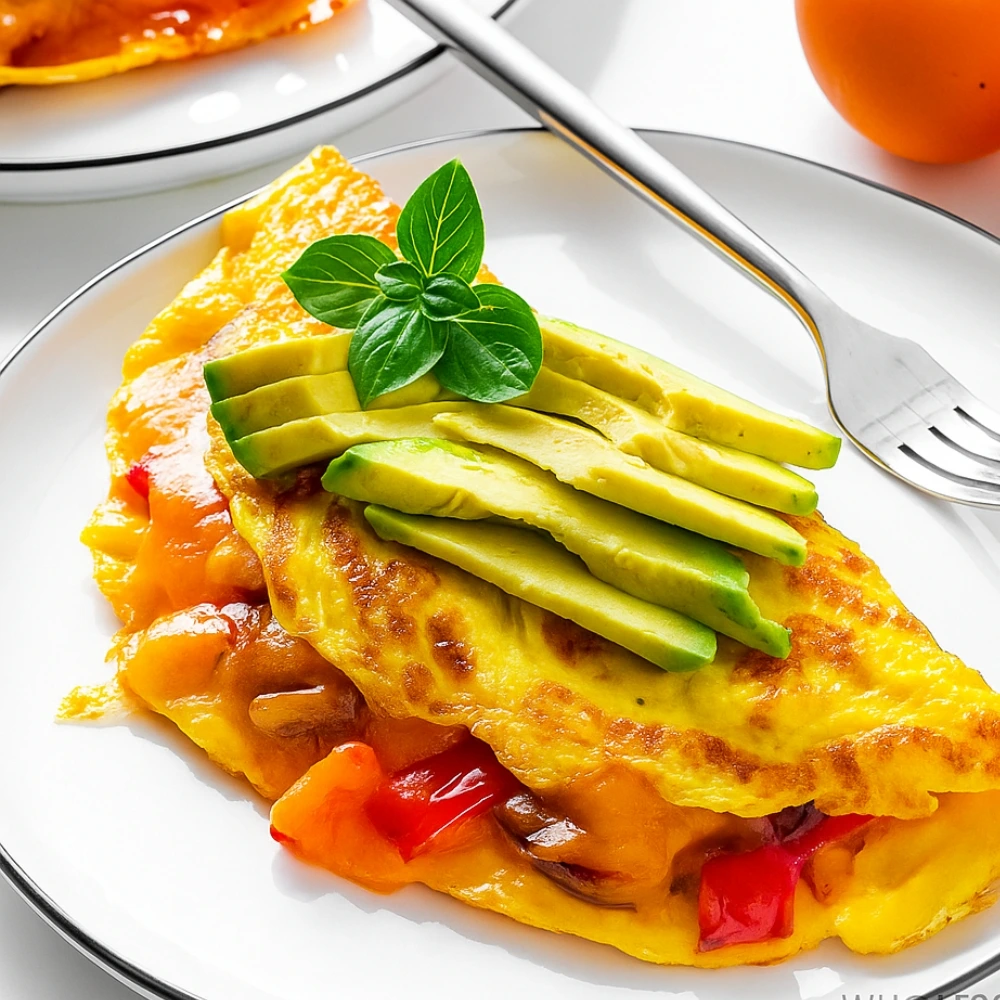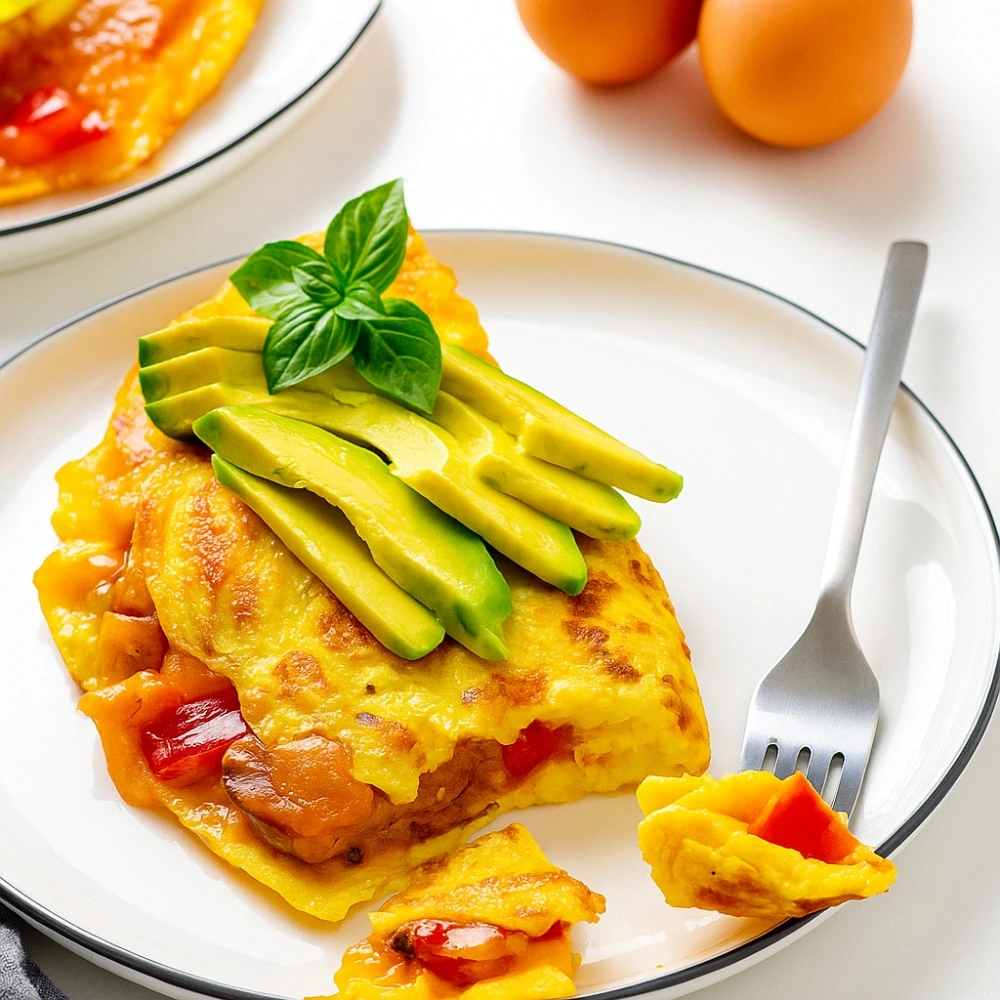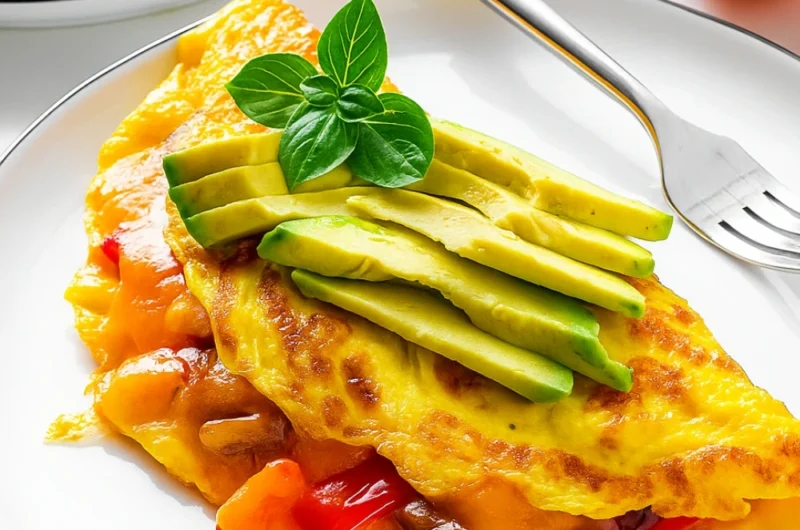The Best Fluffy Pancakes recipe you will fall in love with. Full of tips and tricks to help you make the best pancakes.
The Only Omelette Recipe You’ll Ever Need (with Video & Pro-Tips)

We’ve all been there—standing over a pan with broken eggs, watching what should be a fluffy, golden omelette turn into a rubbery, brown disaster. You follow the recipe exactly, but somehow your omelette still sticks to the pan, breaks when you try to fold it, or tastes disappointingly bland. Sound familiar?
Here’s my promise: In the next 7 minutes, you’ll learn the simple, science-backed techniques to make a diner-quality, fluffy omelette every single time. No more guesswork, no more kitchen failures—just perfect results using this foolproof omelette recipe that I’ve perfected over years of cooking.
The 3 Secrets to Fluffy Omelettes (The Science!)
Before we dive into how to make an omelette, let’s understand why most attempts fail. The difference between a perfect omelette and a kitchen disaster comes down to three critical factors that most recipes completely ignore.
Secret 1 : The Enemy is Water
Here’s what most people don’t know: adding milk or water to your eggs is actually working against you. When heated, these liquids create steam, which makes your omelette spongy and tough instead of creamy and tender.
The science: Eggs are already about 75% water. Adding more dilutes the proteins and creates excess moisture that turns to steam during cooking. Instead, try adding a tablespoon of heavy cream or crème fraîche for richness, or simply use eggs alone for a pure, custardy texture.
Secret 2: Agitation Creates Texture
The way you whisk your eggs determines your final texture. Gentle whisking incorporates just enough air for a classic fluffy omelette recipe, while vigorous whisking creates too much foam, leading to a tough result.
The technique: Use a fork or whisk to gently beat eggs for 30-45 seconds until just combined. You want a uniform yellow color without excessive bubbles or foam.
Secret 3: Temperature is Everything
This is where 90% of home cooks go wrong. High heat might seem efficient, but it’s the fastest way to create a brown, rubbery disaster. Medium-low heat allows proteins to set gently while maintaining that silky texture.
The rule: If you hear aggressive sizzling when eggs hit the pan, it’s too hot. The eggs should gently bubble and slowly set around the edges.
How to Make the Perfect Omelette: Step-by-Step Photos & GIFs
Step 1: The Prep
Gather your ingredients before you start cooking. You’ll need:
- 2-3 large eggs (room temperature works best)
- 1 tablespoon butter or oil
- Salt and pepper to taste
- Your chosen fillings (prep these first!)
Step 2: The Whisk
[GIF showing proper whisking technique] Crack eggs into a bowl and whisk gently with a fork for 30-45 seconds. Don’t overbeat—you want them just combined with a uniform color. Season with salt and pepper.
Step 3: The Pan & Butter
Heat an 8-inch non-stick pan over medium-low heat. Add butter and let it melt completely. The butter should shimmer but not brown or smoke.
Step 4: The Pour & Swirl
[GIF showing egg hitting pan and initial swirl] Pour eggs into the center of the pan, then immediately tilt and swirl to distribute evenly. This creates the foundation layers for your omelette.
Step 5: The Cook & Fill
Let the eggs set for 30-45 seconds without stirring. As edges begin to set, gently push them toward the center with a spatula, tilting the pan to let uncooked egg flow underneath. When eggs are almost set but still slightly wet on top, add fillings to one half.
Step 6: The Fold
[GIF showing clean fold with spatula] Using a spatula, carefully fold the empty half over the filled half. Don’t worry if it’s not perfect—practice makes perfect!
Step 7: The Plate
[Hero shot of final omelette] Slide onto a plate seam-side down. The residual heat will finish cooking the eggs to perfection.

Beyond Cheese: 15+ Omelette Filling Ideas
| Category | Filling Combinations |
|---|---|
| The Classic Diner | bell peppers, onions, cheddar cheese |
| The Mediterranean | Spinach, feta, kalamata olives, sun-dried tomatoes |
| The Tex-Mex | Chorizo, black beans, jalapeño, pepper jack cheese |
| The Gourmet | Smoked salmon, cream cheese, fresh dill, capers |
| The Garden Fresh | Mushrooms, tomatoes, fresh herbs, goat cheese |
| The Breakfast | Bacon, hash browns, cheddar, chives |
| The Healthy | Avocado, spinach, tomatoes, low-fat cheese |
| The Fancy | Truffle oil, gruyere, prosciutto, arugula |
Pro Tip: Keep fillings to 2-3 ingredients maximum. Too many competing flavors can overwhelm the delicate egg base.
Omelette Troubleshooting: Your Questions Answered
Why is my omelette rubbery or brown?
Your heat is too high, and you’re overcooking the eggs. Omelettes should be pale yellow, never brown. Lower your heat to medium-low and be patient—good omelettes take 3-4 minutes, not 30 seconds.
Why did my omelette stick to the pan?
Three common causes:
- Pan wasn’t hot enough before adding butter
- Not enough fat in the pan
- Your non-stick coating is scratched or worn
Solution: Always heat your pan first, use adequate butter or oil, and invest in a quality non-stick pan.
Do I need to add milk to my omelette?
No! As explained in our science section, milk creates steam that makes omelettes tough and spongy. Eggs have enough natural moisture. If you want richness, use cream sparingly.
What’s the best pan for making omelettes?
An 8-inch non-stick or well-seasoned carbon steel pan works best. The size allows proper heat distribution for 2-3 eggs, and the surface prevents sticking.
How do I make a French omelette vs. an American omelette?
French style: Constant stirring while cooking, no browning, rolled presentation American style: Minimal stirring, slight browning okay, folded presentation
This recipe creates an American-style omelette that’s more forgiving for beginners.
How to Store and Reheat Leftover Omelettes
While omelettes are best eaten fresh, you can store leftovers in the refrigerator for up to 2 days.
Best reheating method: Gently warm in a non-stick pan over low heat for 1-2 minutes per side. Avoid the microwave, which makes eggs rubbery.
Your turn! What are YOUR favorite omelette fillings? Drop them in the comments below—I’d love to try them and maybe feature them in a future post. And if this fluffy omelette recipe helped you create the perfect breakfast, share a photo and tag me!
Remember: The secret to mastering how to make an omelette isn’t just following a recipe—it’s understanding the science behind it. Now you have both the knowledge and the technique to create restaurant-quality omelettes at home, every single time.
The Only Omelette Recipe You’ll Ever Need (with Video & Pro-Tips)
Course: BreakfastCuisine: French1
servings5
minutes5
minutes150
kcalIngredients
2 large eggs
1 tablespoon milk (optional)
Salt and pepper to taste
1 teaspoon butter or oil
Optional fillings: grated cheese, herbs, cooked vegetables
Directions
- Crack the eggs into a bowl, add milk (if using), and beat until well combined.
- Season with salt and pepper.
- Heat butter in a non-stick skillet over medium heat.
- Pour in the eggs and tilt the pan to spread them evenly.
- As the eggs start to set, gently lift the edges with a spatula and tilt the pan to let uncooked eggs flow underneath.
- Add your desired fillings.
- Fold the omelette in half and slide it onto a plate. Serve hot.

